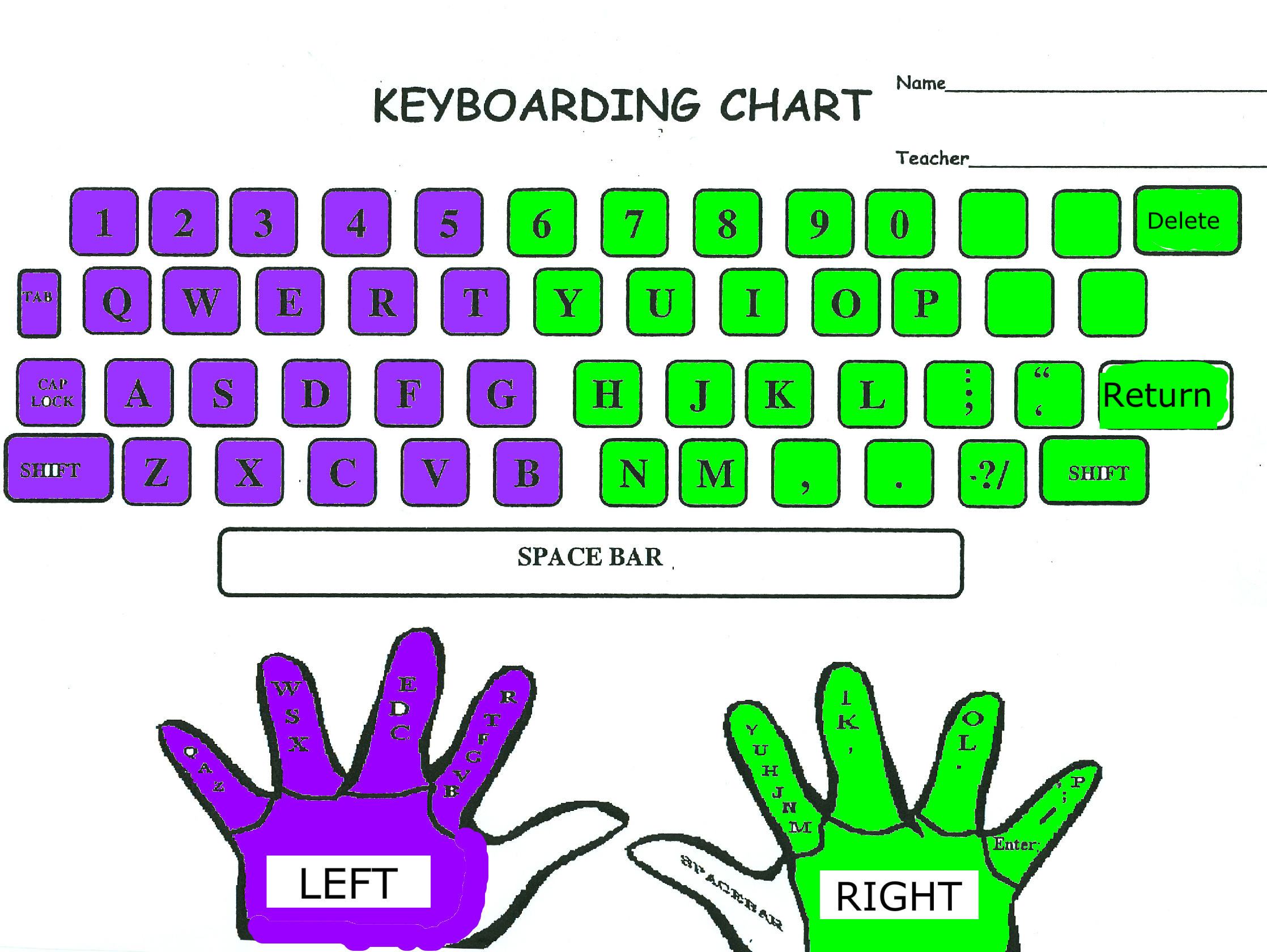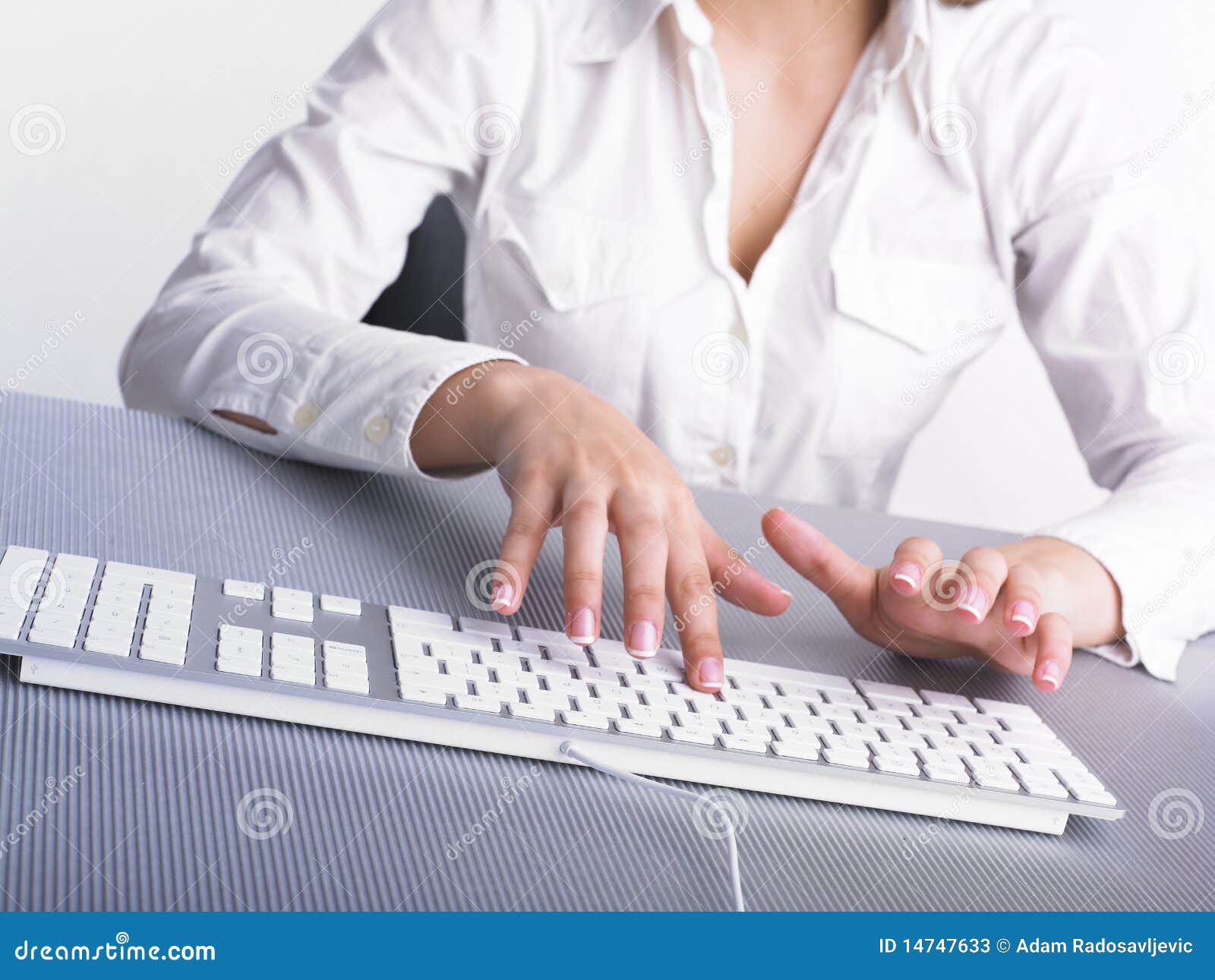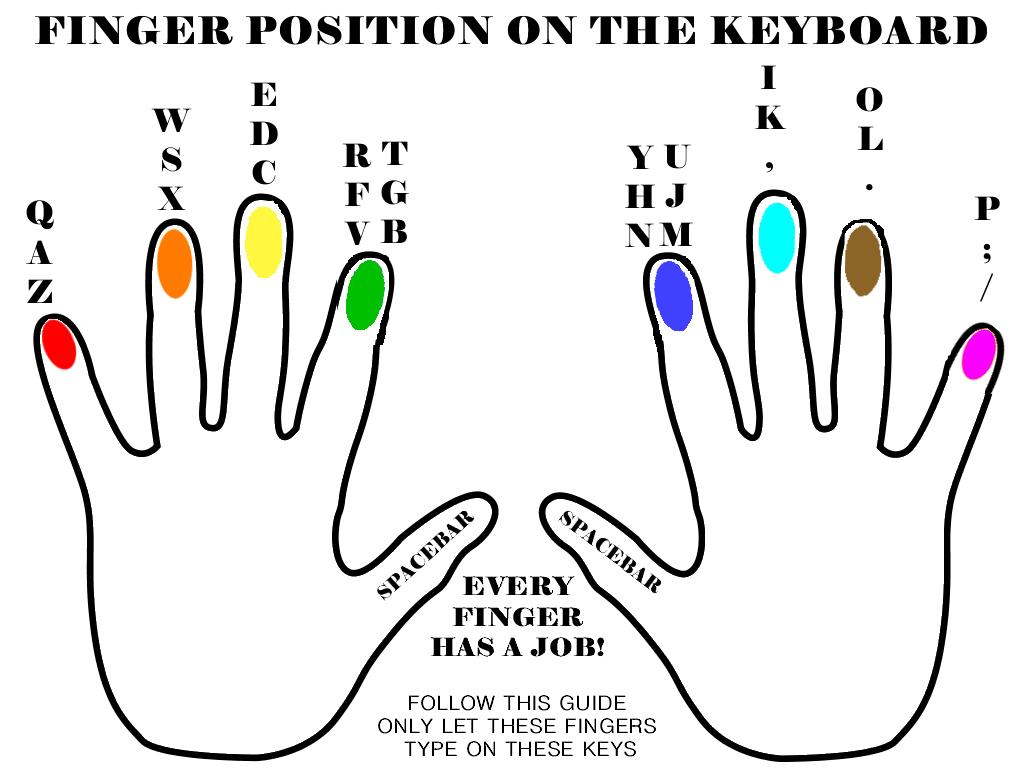

Most of resources in the Internet show that fingers belong to a given key in the form of "full cascade". The "finger-key" mappings should look, therefore, like this: QWERTY, you can try that it is further for your forefinger to reach from key "J" to key "6", than from key "F" to key "6". It is "broken" because numeric keys (the first upper row on the keyboard) are an exception. The correct finger-key mapping resembles a "broken cascade". If you feel somehow uncomfortable during typing, change your position so that you do not feel any inconvenience. Do not try to stretch them for typing! You should not lay your hands in a "rabbit fashion". It is also important that your arms and hands are arranged in a natural way. You do not need necessarily come back to the base position, after a key has been pressed, although, your forefingers should keep their base position whenever possible. During touch typing you reach other keys starting from the base position. The rest of fingers (except for the thumb) should be placed along the "home" row. For QWERTY keyboards that would be keys "F" and "J". This is a picture from my desk.The most important thing is to place your forefingers in the middle of horizontal row. No letters, no nothing, just black keys all over the place. I took it a step further and bought a BLANK keyboard (this is actually the keyboard name). If you are already fast with your touch typing, here is another challenge for you.

Who knows, you might win the touch typing championship one day.
COMPUTER KEYBOARD TYPING FINGERS FREE
There are many free sites out there for practicing touch typing. I recommend to practice till you get at least to 45 WPM (Word Per Minute). You can save couple of hours a week by typing faster. The faster you type, the more time you save.


One hand, one finger, looking at the keyboard.There are many “flavors” of keyboard typing I have seen along the years: After a couple of more days, it felt good - no pain and I actually started touch typing. My fingers were in pain, but I kept going. After a couple of days I have decided to give it a try myself, so I have searched for a free touch typing site and practiced that for a couple of days. He was typing fast while looking at the screen, not at the keyboard. My new neighbor was a touch-typing person. And still, I kept looking at the keyboard for finding the keys. Same keyboard, 8–12 hours a day, every day. I wasn’t slow on my typing, and I was using both hands, but I kept looking at the keyboard while typing.
COMPUTER KEYBOARD TYPING FINGERS SOFTWARE
I was a software engineer for ~10 years before I discovered the power of touch typing.


 0 kommentar(er)
0 kommentar(er)
